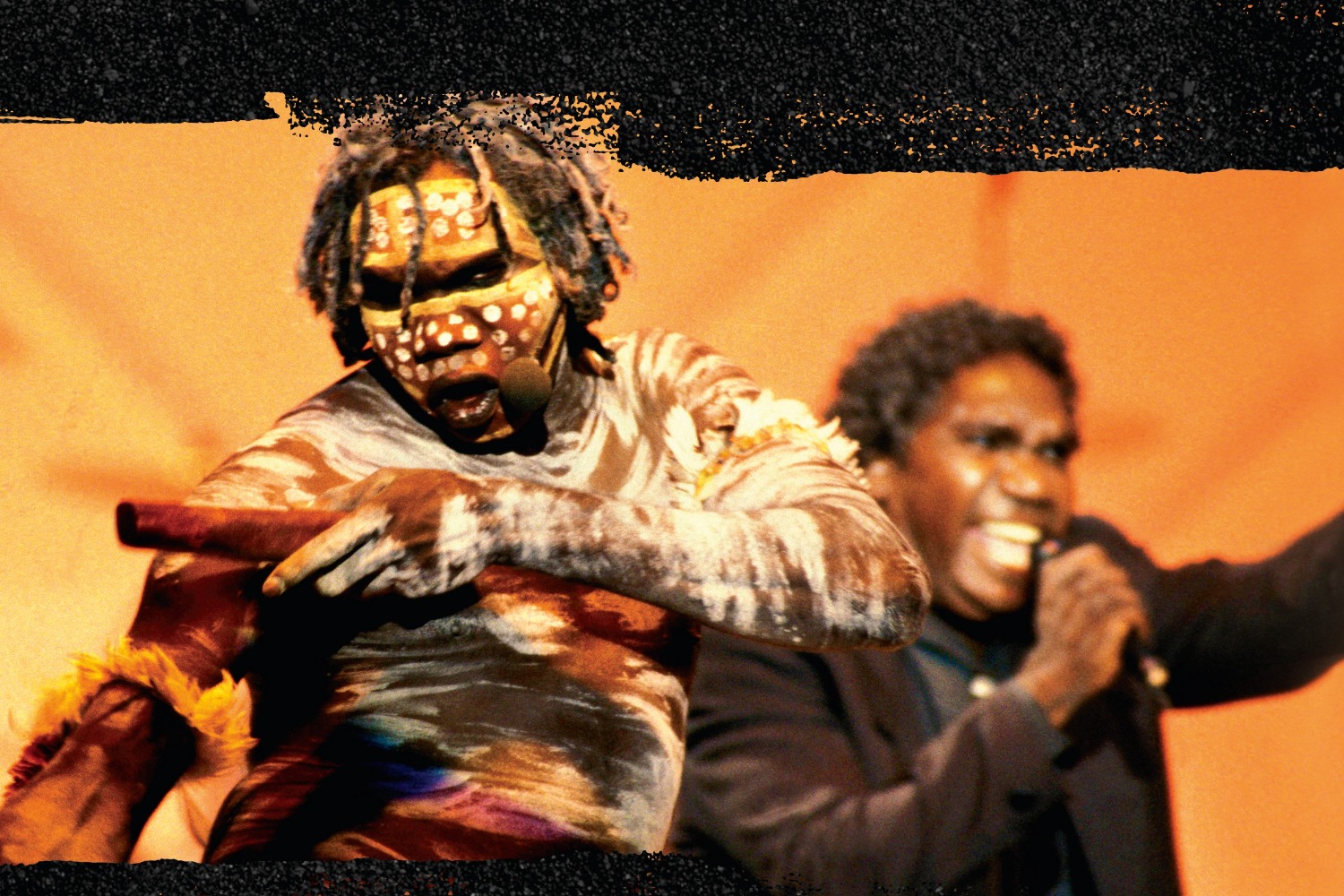“Words are easy, words are cheap / much cheaper than our priceless land. / But promises can disappear / Just like writing in the sand” (M Yunupiŋu, P Kelly, P Garrett, G Yunupiŋu, W Marika, S Kellaway, M Munuŋgurr, C Williams 1991).
Indigenous readers are warned this article may include images of, and content about, deceased persons.
Authorised biographer and ABC News Darwin journalist, Matt Garrick shows the worth, power and permanence of words and story with Yothu Yindi biography, Writing in the Sand.
With introductions by Yalmay Yunupiŋu and Witiyana Marika, Garrick amplifies the voice of legendary band Yothu Yindi, further allowing their movement, music and story to be heard, spread and celebrated for generations to come.
Stay up to date with what’s happening in Melbourne here.
Yothu Yindi revolutionised music through their explosive sound, message and performance as evident on 30-year-old anthem ‘Treaty’, their integration of traditional instruments, yidaki and bilma, and Yolŋu dance, and their mix of Yolŋu (Aboriginal people of East Arnhem Land) and balanda (non-Indigenous) members, whilst using their platform for activism. Garrick captures this balance of music, movement and milestone impeccably across Writing in the Sand.
He consciously tells Yothu Yindi’s story, and those closely associated to the story, through exchanges and anecdotes told through multiple interviewees voices from current and former band members, family members and collaborators and fellow musicians including Witiyana Marika, Stu Kellaway, Jodie Cockatoo, Yalmay Yunupiŋu, Peter Garrett, Paul Kelly, Neil Finn, Joy McKean, Bart Willoughby and Andrew Farriss.
Working on an inception-to-present timeline, Garrick further includes exclusive never-before-seen photos and original artworks from Yolŋu, in an attempt to capture and preserve the band’s legacy and that of the Yolŋu clans through acknowledging and integrating language, song, traditions, beliefs and connection to Country and community.
Through that interview and narrative building, Garrick speaks to the life of both people and place with cultural sensitivity, respect and accuracy, and has structured the book in such a way to give all significant characters in the Yothu Yindi narrative space to explore their influence and reflect on how their story is interconnected.
This is further emphasised in the music space, drawing attention to the globalised music ecology; from David Bowie having a stake in the group’s initial name, Diamond Dogs, and sound, along with Elvis, an air guitaring front and centre experience with Dire Straits, the Australian music linkage with Midnight Oil and Paul Kelly, to how Yothu Yindi collectively contributed to that deeply intertwined yet fractured web (in terms of representation) through weaving native tongue with the colonised white English language. This story is a reflection of the connection of community. But Garrick offers deeper insight and exploration into their continued story.
While Writing in the Sand is framed as a biography dissecting and curating the journey of the band “from bush to contemporary world (p.28)” – and it is – the Yothu Yindi story is an Australian history lesson as explored through subtle analysis of our political, social and educational systems, in relation to the barriers faced by First Nations groups and clans living on Arnhem Land.
Garrick highlights the action and discourse of elders and clan members to shape social, political, educational and music agendas in Australia. This was further amplified to national and international level through Yothu Yindi anthems and the group’s worldwide presence, calling reference to the high profile Supreme Court battle of Milirrpum v Nabalco and the Commonwealth of Australia as led by Witiyana Marika’s father, land rights pioneer and artist, Roy Marika, which in turn laid groundwork for the establishment of the Aboriginal Land Rights (NT) Act of 1976. It’s further a profile on higher education and the steps taken for Indigenous programming and recognition to be made, as shown through the milestone reached by Mandawuy Yunupiŋu; the first Yolŋu from Arnhem Land to gain university qualification through Deakin University. That recognition draws attention to the continued disparity in this area, almost 35 years later.
Garrick is delicate in conveying progress as related to the band, their activism efforts and the efforts of the Yolŋu community. It’s subtle but it is there and an important character in the Yothu Yindi story that is covered with consideration. He is also sensitive in discussing loss and grief, particularly surrounding founding member Mandawuy Yunupiŋu. It’s heartfelt and respectful – a tonal thread that runs throughout Writing in the Sand.
Writing in the Sand is a funny, wholesome admission, celebration and tribute to Yothu Yindi, their triumphant social, political and educational movements and charity, their leadership role in Australia, their strong friendships and sense of community, and their powerful, legendary sound, presence and performance that will forever be cemented in our rich music history.
It covers the values, the culture, the sound, the sacred traditions, the connections and the warmth of Yothu Yindi to moving effect. Writing in the Sand will make you laugh, it will make you cry, but most of all, it will make you remember and admire the ARIA Hall of Famers, the Tribal Voice of Australia, the unparalleled Yothu Yindi; all members both past and present. Latju (beautiful).
Check out the book here.

